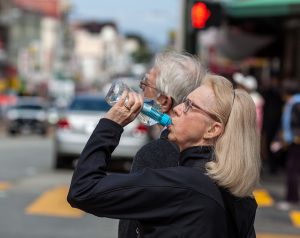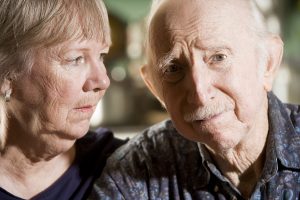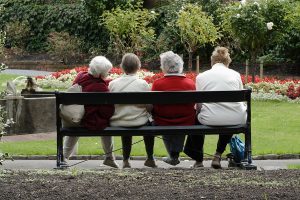Pneumonia Information

According to the CDC (2010), chronic lower respiratory disease and pneumonia with influenza are the third and ninth leading causes of death, respectively, among older adults. Older adults 65 and older are more often affected by these disorders than younger adults, and the risk of death from pneumonia increases with age. In 2005, there were 651,000 hospital discharges of males diagnosed with pneumonia and 717,000 discharges of females, with greater than 62,000 deaths attributed to pneumonia (American Lung Association [ALA], 2008). The majority of these cases occurred in those age 65 and older, with the elderly having 5–10 times the risk of death from pneumonia as younger adults (Kennedy-Malone, Fletcher, & Plank, 2004).
Pneumonia is an infection of the lung that can be caused by bacteria, viruses, or mycoplasmas. The two most common ways to get pneumonia are through inhalation of droplet particles carrying infectious germs and aspiration of secretions of the nose or mouth areas. Older adults are at higher risk for pneumonia and can get a more serious infection if they also have other chronic diseases such as COPD, heart failure, a suppressed immune system, cerebrovascular disease, and poor mobility (ALA, 2012). The incidence of community-acquired pneumonia (CAP) among people age 65 and older is about 221.3 per 10,000 (ALA, 2008). Streptococcus is the most common bacterial cause, with about 50% of people with CAP requiring hospitalization (Weinberger, 2004). When hospitalized, older people are at risk for poor health outcomes, including respiratory failure requiring ventilator support, sepsis, and longer length of hospitalization, duration of antibiotic therapy and other supportive treatment (ALA, 2012).
Warning signs
The onset of bacterial pneumonia can be sudden or gradual; however, older adults may not present with the typical symptoms of chills, fever, chest pain, sweating, productive cough, or shortness of breath. Instead, they may have a sudden change in mental status (confusion/delirium). Cases of viral pneumonia account for about half of all types of pneumonia and tend to be less severe than bacterial pneumonia. Symptoms of viral pneumonia include fever, nonproductive hacking cough, muscle pain, weakness, and shortness of breath.
Diagnosis
Diagnosis is made through chest x-ray, complete blood count, and/or sputum culture to determine the type and causal agents (if bacterial). A thorough history and physical that includes assessment of swallowing ability and eating (watch for coughing while eating) to evaluate for aspiration risk should be done. Crackles may be heard in the lungs through a stethoscope, and chest pain with shortness of breath may be present.
Treatment
Bacterial pneumonia can often be treated successfully when detected early, and viral pneumonia generally heals on its own (antibiotics are not effective if pneumonia is caused by a virus), though older adults may experience a greater risk of complications than younger adults. Oral antibiotics will significantly help most patients with bacterial pneumonia.
Aspiration pneumonia is caused by inhalation of a foreign material, such as fluids or food, into the lungs. This occurs more often in persons with impaired swallowing. For older adults receiving tube feedings, care must be taken to avoid having the person in a laying position during and immediately after tube feeding because aspiration can occur; it is important to note that tube feedings do not reduce the risk of aspiration. Having the head of the bed elevated or, even better, the person in a sitting position when eating or receiving nutrition through a feeding tube, helps to avoid the potential complication of pneumonia related to aspiration.
When recovering from pneumonia, one should get plenty of rest and take adequate fluids to help loosen secretions (with accommodations made to support the added need to urinate due to the increased fluid intake, a common reason why older adults may not drink adequate fluids). Tylenol or aspirin (if not contraindicated by other conditions) can be taken to manage fever as well as aches and pains. Exposure to others with contagious respiratory conditions should be avoided. Respiratory complications are often what lead to death in the older adults, so they should be cautioned to report any changes in respiratory status such as increased shortness of breath, high fever, or any other symptoms that do not improve. It is important to follow up with the physician or nurse practitioner and get a chest x-ray if ordered, since symptoms may improve with treatment before the pneumonia is actually completely gone.
Prevention of pneumonia is always best. Adults over the age of 65 are advised to get a pneumonia vaccine. Persons younger than age 65 who have higher risk (those with respiratory problems or persons in nursing homes) should get the vaccination. A yearly flu vaccine is also recommended for older adults, because pneumonia is a common complication of influenza in this age group. Medicare will cover these vaccines for older persons.




